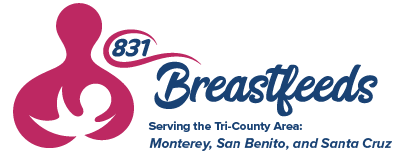
Challenges are common but knowing what to expect and when to get help can keep you on track to meet your breastfeeding goals.
Here are some common breastfeeding challenges and informational links, with even more resources listed at the end of the page. All information is provided for educational purposes only and is not meant to take the place of advice from a medical provider. If you can’t find a topic you are looking for, try typing in a key word in the search box at the top right of the page.
My baby won’t latch:
Breastfeeding takes practice—just like learning a new dance. It gets easier as your baby grows. Check out tips for latching and pictures of different positions in the Guide to Breastfeeding.
A short video on latch is available through YouTube: What’s A Good Latch?
My nipples are sore:
Most of the time, sore nipples can be minimized with a good latch and positioning. Mild discomfort is not uncommon but if it continues more than 30 seconds and throughout and/or between feedings, it should be evaluated. Pain usually peaks around the third day after birth and is gone within two weeks. If there is skin damage, e.g. cracked, bleeding, blistered skin, a health care professional should be consulted to assess if there is a medical reason (parent or baby) for the damage. Both Kellymom and USDA-WIC have a webpage on sore nipples.
Am I making enough milk for my newborn?
The more you breastfeed your baby, the more milk you make. Using formula, even a small amount, will reduce the amount of milk you make. Newborn babies have small stomachs, about the size of their fist, so they need to breastfeed often. After a few days, you will start to make larger amounts of milk. Delay any use of a pacifier until at least one month of age to ensure breastfeeding is going well. After the first few days, your breasts will feel full and firm. Then after a few weeks, your breasts will start to feel softer and not as full. This is normal; your milk supply is adjusting to your baby’s needs. Your milk has NOT gone away. Find more information on milk supply, see the Guide to Breastfeeding from California WIC and Low Milk Supply from USDA-WIC.
A short video on milk supply is available through YouTube: Am I Making Enough Milk?
What medications should I avoid while I am breastfeeding?
You should always talk to your doctor/baby’s doctor about any medications, herbs, or substances you are taking while breastfeeding. Fortunately, families can access some of the same organizations that doctors use for expert help on how medications might affect your baby:
- Mother to Baby provides expert, confidential and no-cost information about medications and other exposures during pregnancy and breastfeeding by phone (866.626.6847), text, email and chat, in both English and Spanish. They specialize in answering questions about the safety/risk of exposures, such as medications, vaccines, chemicals, herbal products, substances of abuse, maternal health conditions and more during pregnancy or breastfeeding.
- InfantRisk Center(IRC) is an international call center located at the Texas Tech University Health Sciences Center in Amarillo, Texas. They are available for questions from 8:00AM - 5:00PM CST, (9-4 Pacific time), Monday- Friday, at 1 (806) 352-2519
- Refer to the Medication Safety and Substance Use page for more resources.
Webpages with Information about Common Breastfeeding Challenges
- Breastfeeding: What to Expect - CDC
- Common Breastfeeding Challenges – Office of Women’s Health
- Common Breastfeeding Challenges – USDA-WIC
- KellyMom
- La Leche League
- LowMilkSupply
- Global Health Media has many beautiful international videos in different languages that explain how to breastfeed. You must first register as an individual user to access videos.
